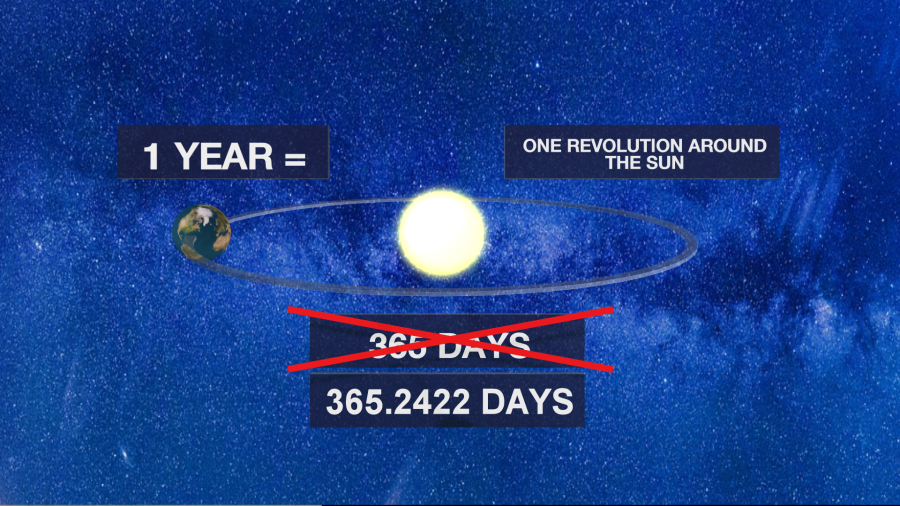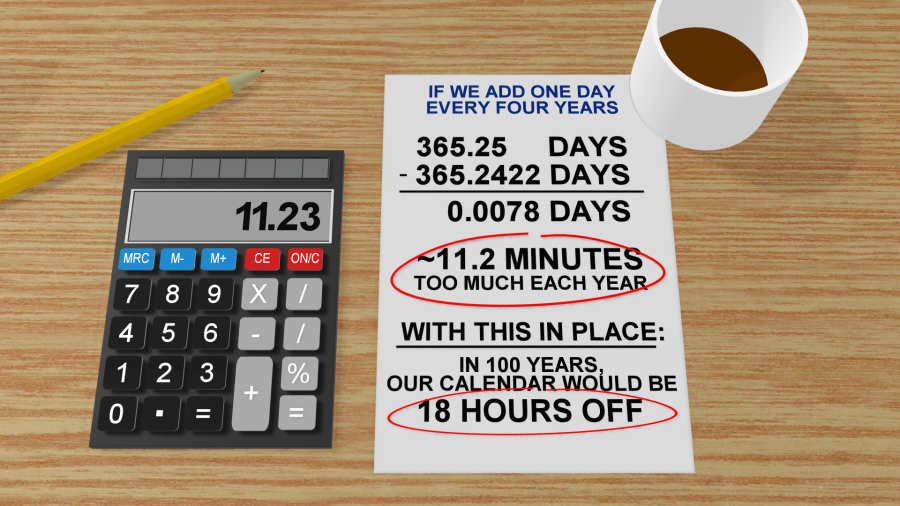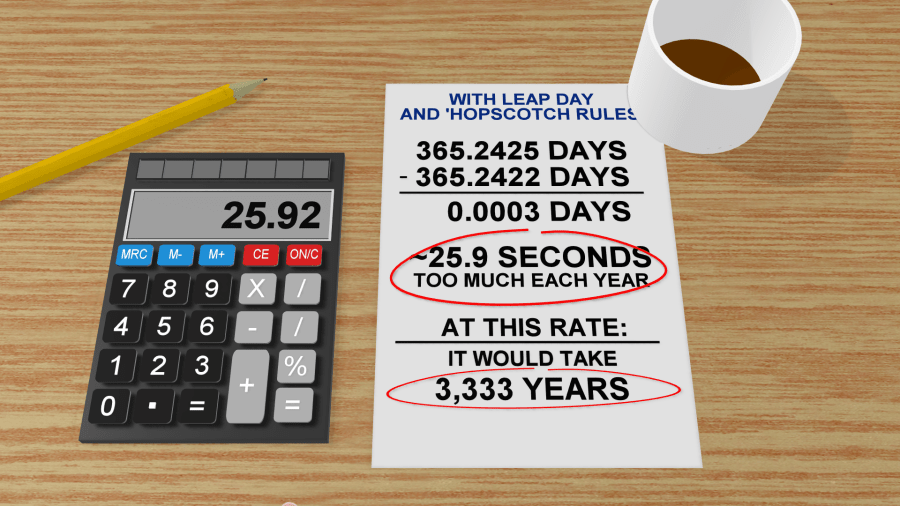It’s been four years since we’ve had a February 29. Ever wonder why?

Our calendar year is 365 days, but it takes longer than that for Earth to complete one revolution around the Sun. Instead of 365 days, it takes 365.2422 days. In other words, our calendar is just a tad short. While it may not seem like a big difference, it adds up.

If Leap Day wasn’t a thing, we’d have about six hours extra at the end of the year. After four years, that’s nearly 24 hours or a full day (6 hours extra each year x 4 years = 24). After one hundred years, that’s almost a full month at 24 days!
To account for the loss of one day after four years, we add on an extra day every four years. Boom! Our math dilemma has been solved: a loss of 24 hours + a gain of 24 hours = all good…
Except the math does not add up perfectly. Instead of 365 days exactly, it is now 365.25 days. In other words, we will have 11 extra minutes each year.


The addition of Leap Year in every century that is evenly divisible by four will keep our calendar year just about where it should be for quite some time. It won’t be another day off with Leap Year and the Hopscotch Rule until 3,333 years from 2020.

Now you know.










